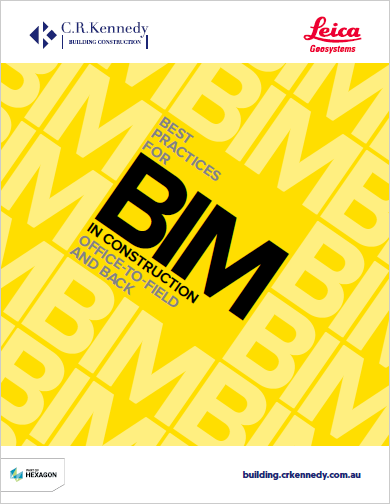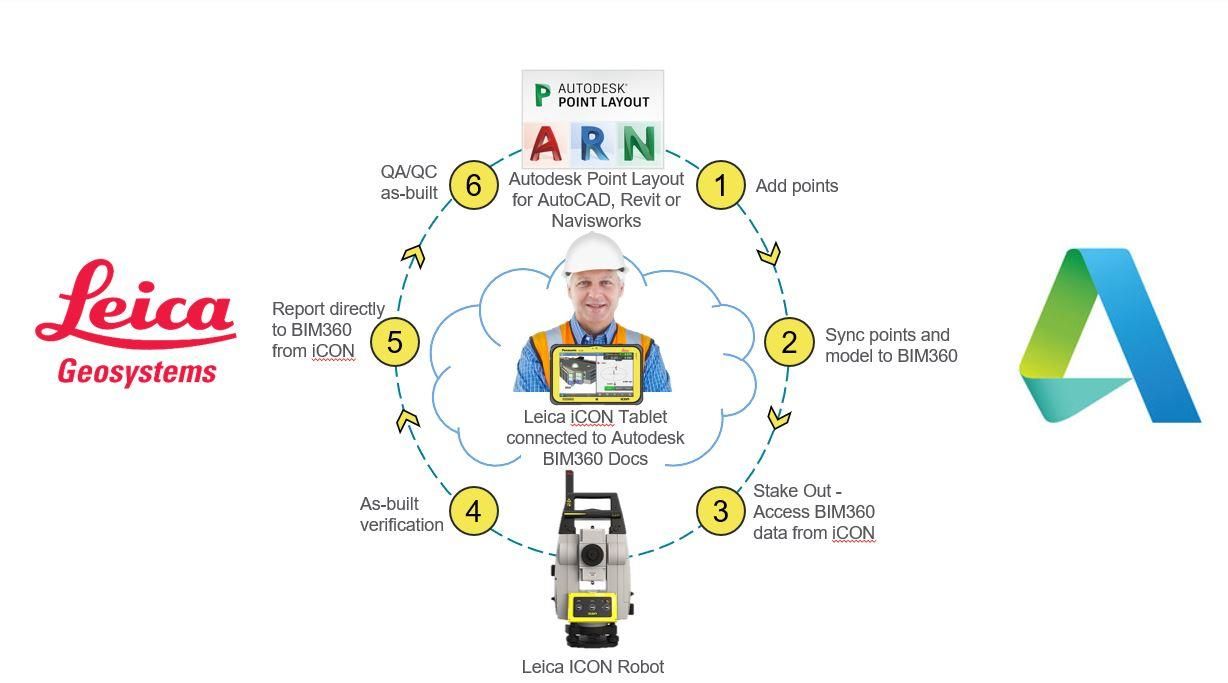CR Kennedy Building Construction are pleased to be scheduled to present a specialist workshop for this years Construction Industry Forum. Benefit from expert knowledge and timely product releases to understand how the Leica ICON range of Digital Layout Tools allow you to streamline your BIM, from office to field and back.
Product specialists Chris Johnson (USA) and Matt Rumbelow (AUS) will provide an interactive demonstration of the new ICON Build V5.0, now integrating directly to the Autodesk BIM360 platform for efficient data transfer and continuous connectivity.
Supporting BIM workflows
Recognizing the value of BIM, Leica recently integrated its field software Leica Captivate and iCON with Autodesk BIM 360, a construction management platform. This integration has far-reaching implications for data workflows, as different tools now become interoperable and less time is spent on data exchange between different systems.
The connection of Autodesk BIM 360 with Leica’s field software will allow multiple supported data workflows, including:
- Connectivity to Autodesk BIM 360 for Captivate and iCON software;
- Data exchange via cloud-based services between office and field;
- Straightforward data flow from point creation in the design to construction lay-out onsite, back to validation in the office;
- AutoCAD DWG file format support for Captivate and iCON software.
Because all Leica iCON products now use the iCON field software, it has become easier to establish streamlined and connected workflows across applications. Both new devices come with the iCON build software, which includes sketching, stakeout, layout of points and lines, checks and as-built creation. However, only the iCB70 offers additional functionality (called iCON build plus) that includes support for Autodesk BIM 360 and Leica ConX. For the iCB50, iCON build plus software is optional for performing additional operations onsite.

Further information - Leica and Autodesk
"The building and construction industry is a vital component to the Australian economy. It accounts for 8% of total GDP, includes over 350,000 businesses, and employs over one million people. More broadly it contributes to the health, wellbeing, and standard of living of every Australian; and specifically the advancement of heating, ventilation and air conditioning (HVAC) technologies designed and installed by our AMCA members.
As Australia’s population grows towards the predicted 39 million by 2055, demand for more and better infrastructure is escalating, while the need to avoid lock-in of high-emissions assets is becoming more and more critical. All this occurs against a backdrop of fiscal deficits across the forward estimates, as well as ongoing economic and environmental uncertainty with disruptive consequences for the carbon economy and traditional methods of industrial production.
Today’s construction environment is characterised by shorter building cycles, reduced budgets and growing expectations for accurate data on demand. Although this situation presents numerous challenges for the industry, it also creates tremendous opportunities for firms that wish to differentiate themselves in an increasingly competitive market. We need to be smarter and more innovative about how we deliver construction projects; we need to be smarter and more innovative about how we use and operate assets during their life.
Since 2010, the AMCA has sought to actively promote innovation through our industry-led building information and data standards initiative (BIM-MEPAUS), which aims to improve information capture and communication across the supply chain; thus, allowing industry to focus on value add activities.
Over recent years, the industry has improved productivity largely due to new design technologies and building materials. However, the next frontier of innovation must be a fundamental change in the way information is captured and used throughout the procurement and construction process. Not only will projects be able to be delivered more efficiently, with less waste and at lower cost, but the data captured will transform the way buildings are managed and operated. > >Whether you’re actively embracing BIM or just looking for a way to increase efficiency and transparency on the jobsite, digital layout and capture is a great place to start."
Mr Sumit Oberoi
Executive Director
Air Conditioning and Mechanical Contractors' Association




